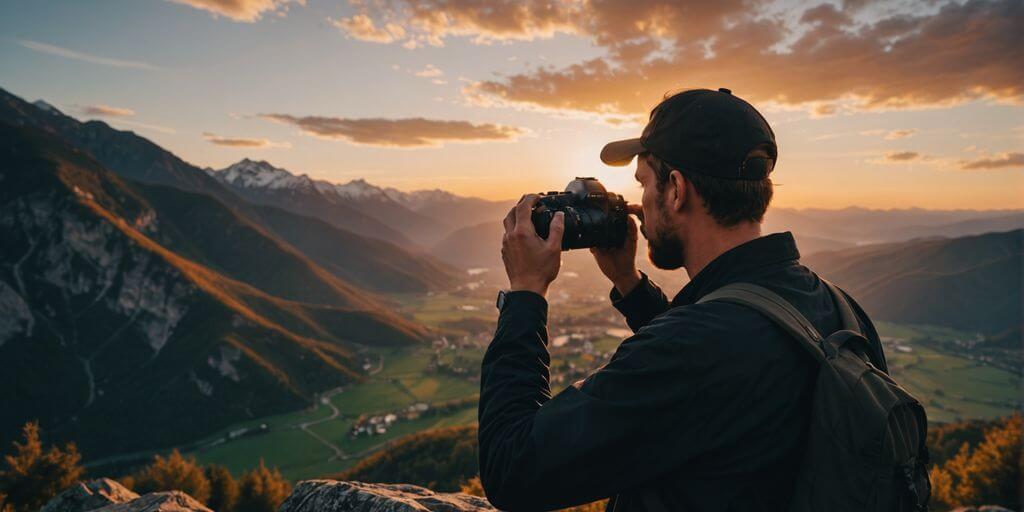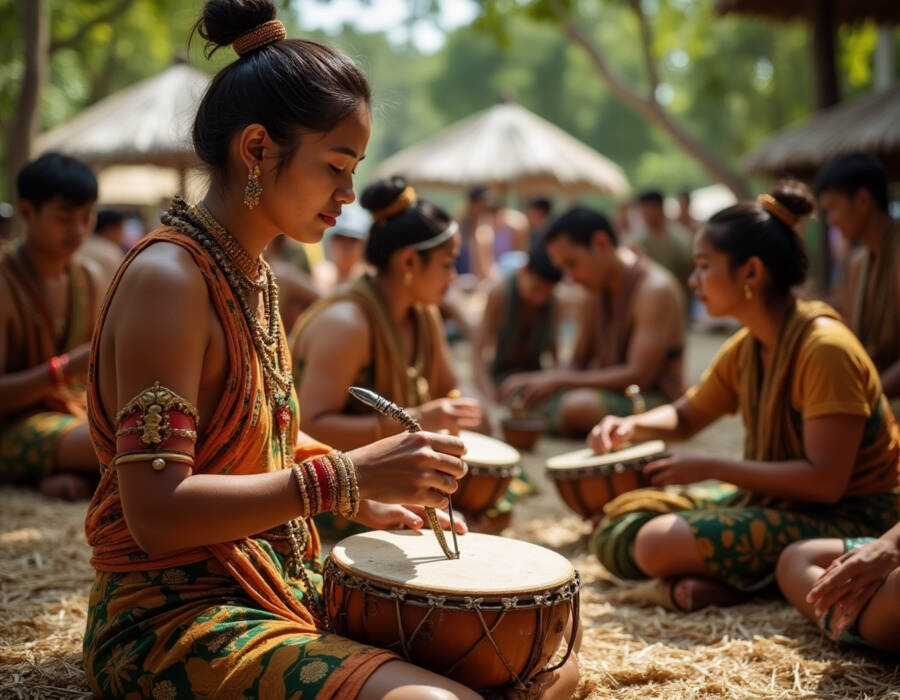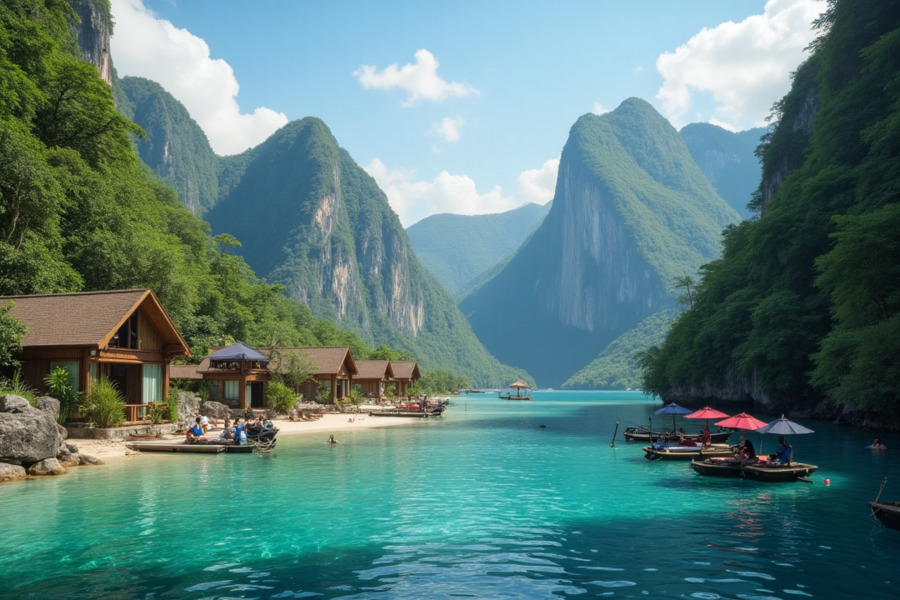Travel Photography: Capturing the Perfect Shot
Travel photography is an exciting way to capture the beauty and essence of the places you visit. Whether you’re new to photography or have some experience, learning the right techniques can make a big difference. This guide will help you take amazing travel photos that you’ll treasure forever.
Key Takeaways
- Understand your camera’s manual settings to take better control of your shots.
- Use the rule of thirds and leading lines to compose more interesting photos.
- Take advantage of natural light, especially during the golden hour, for stunning images.
- Capture the local culture by photographing people and candid moments.
- Enhance your photos with basic editing techniques and color adjustments.
Understanding Your Camera
Mastering Manual Settings
Getting to know your camera’s manual settings can be a game-changer. Switching off Auto mode and diving into Aperture Priority, Shutter Priority, or Manual mode gives you more control over your shots. Start with Aperture Priority to manage depth of field, then explore Shutter Priority for motion control. Finally, master Manual mode to balance all settings yourself.
Choosing the Right Lens
The lens you choose can make a huge difference in your travel photos. Wide-angle lenses are great for landscapes, while prime lenses are perfect for portraits. Zoom lenses offer versatility, letting you capture both close-ups and wide shots without changing lenses.
Using Filters Effectively
Filters can enhance your photos in various ways. Polarizing filters reduce glare and make colors pop, while ND filters allow for longer exposures even in bright light. Experiment with different filters to see how they can improve your shots.
Understanding your camera is the first step to becoming a better travel photographer. The more you practice, the more intuitive these settings will become.
Composing Your Shots
The rule of thirds is a simple but powerful tool to improve your photos. Imagine your frame divided into nine equal parts by two horizontal and two vertical lines. Place your main subject along these lines or at their intersections. This technique helps create balance and interest in your shots.
Leading lines guide the viewer’s eye through the photo, usually towards the main subject. These lines can be anything from roads and rivers to fences and shadows. Experiment with different lines to see how they affect the composition and feel of your image.
Framing involves using elements within the scene to create a ‘frame’ around your subject. This could be anything from archways and windows to tree branches. Framing adds depth and context to your photos, making them more engaging.
Good composition can turn an ordinary scene into an extraordinary photo. Play around with these techniques to see what works best for you.
Lighting Techniques
Golden Hour Photography
Golden hour is a magical time for photographers. It’s the hour after sunrise and the hour before sunset when the light is soft and warm. This light can make your photos look dreamy and beautiful. Try to plan your shoots during these times to get the best results. Avoid the harsh midday sun, which can create strong shadows and wash out colors.
Night Photography Tips
Night photography can be tricky but rewarding. Use a tripod to keep your camera steady and avoid blurry shots. Play around with long exposures to capture more light and create stunning effects like light trails. Don’t forget to adjust your ISO settings to reduce noise in your photos.
Using Natural Light
Natural light is your best friend in photography. Overcast days can be great for shooting because the clouds act like a giant diffuser, softening the light. When shooting indoors, try to position your subject near a window to take advantage of the natural light coming in. Experiment with different times of the day to see how the light changes and affects your photos.
Lighting can make or break your travel photos. It’s not just about having enough light; it’s about the quality, direction, and color of that light.
Capturing Local Culture
Photographing People
Photographing people can be a bit tricky, especially since some folks and cultures aren’t too keen on having their pictures taken. Always do your homework before you arrive, so you know what’s acceptable. Try to capture the daily life of locals, like kids playing, families hanging out, or people going about their routines. These shots can really bring your travel photos to life.
Documenting Traditions
To truly capture the essence of a place, focus on its traditions. This could be anything from local festivals and ceremonies to everyday customs. Look for unique cultural practices and document them. This not only makes for interesting photos but also tells a story about the place you’re visiting.
Candid Street Photography
While it’s great to get those iconic landmark shots, don’t forget to look for candid moments. Interact with locals, observe their daily routines, and snap photos that tell a story. Candid shots of street vendors, bustling markets, or spontaneous interactions can add a sense of life and vitality to your travel photos.
Capturing the local culture in your photos can make your travel memories even more special. It’s not just about the places you visit, but the people and traditions that make those places unique.
Post-Processing Tips
Basic Editing Techniques
Once you’ve snapped your travel photos, it’s time to make them shine. Post-processing is key to bringing out the best in your shots. Use software like Adobe Lightroom or Snapseed to tweak exposure, contrast, and colors. Remember, a little goes a long way—don’t overdo it!
Using Presets
Presets can be a lifesaver when you’re editing a bunch of photos. They help you keep a consistent look and feel across your shots. You can find presets online or create your own. Just apply them and make minor adjustments as needed.
Enhancing Colors and Contrast
To make your photos pop, play around with the colors and contrast. Boost the saturation a bit to make the colors more vibrant. Adjust the contrast to add depth. But be careful—too much can make your photos look fake.
Post-processing is like the final touch on a masterpiece. It can turn a good photo into a great one, but always aim to keep it true to the original scene.
Planning Your Photography Trip
Researching Locations
Before you even pack your bags, spend some time researching your destination. Look at photos taken by other photographers, read articles about key spots, and even check out satellite images on Google Earth. This will give you a good idea of where to go and what to expect. Knowing the best spots ahead of time can save you a lot of time and effort.
Creating a Shot List
Make a list of all the key locations you want to photograph. Think about the position of the sun and how it will affect your shots. This will help you stay organized and ensure you capture all the shots you want. Here’s a simple way to organize your shot list:
- Location
- Best Time to Shoot
- Key Features to Capture
Packing Essential Gear
When it comes to packing, less is often more. Make sure you bring the essentials: your camera, a couple of lenses, extra batteries, and memory cards. Don’t forget a sturdy tripod and some cleaning supplies for your gear. And always pack a sense of humor and a willingness to go with the flow. Travel can be unpredictable, so be ready for anything!
Planning ahead can make your photography trip smoother and more enjoyable. But remember, sometimes the best shots are the ones you didn’t plan for.
Advanced Techniques
Long Exposure Shots
Long exposure shots are a fantastic way to capture movement in your photos. By using a slow shutter speed, you can create stunning effects like silky smooth waterfalls or light trails from cars. Remember to use a tripod to keep your camera steady and avoid blurry images. Experiment with different shutter speeds to see what works best for your scene.
HDR Photography
HDR (High Dynamic Range) photography helps you capture scenes with a lot of contrast, like a bright sky and a dark foreground. To create an HDR image, take multiple shots at different exposures and blend them together using software. This technique brings out details in both the shadows and highlights, making your photos look more dynamic.
Panoramas and Stitching
Panoramas are perfect for capturing wide landscapes or cityscapes. To create a panorama, take a series of overlapping photos and stitch them together using photo-editing software. Make sure to keep your camera level and use consistent settings for each shot. This will help ensure a seamless final image.
Advanced techniques like long exposure, HDR, and panoramas can take your travel photography to the next level. Don’t be afraid to experiment and find your unique style.
Conclusion
Travel photography is an amazing way to capture the beauty and memories of your journeys. By using the tips and techniques shared in this article, you can improve your skills and take stunning photos that tell the story of your adventures. Remember, practice is key, so keep exploring and snapping pictures. Let your creativity shine through your camera lens. Happy shooting!
Frequently Asked Questions
What is the best time of day to take travel photos?
The best time to take travel photos is during the golden hour, which is shortly after sunrise or just before sunset. The light is softer and warmer, making your photos look amazing.
How do I make sure my photos are not blurry?
To avoid blurry photos, use a tripod or stabilize your camera on a solid surface. Also, make sure your shutter speed is fast enough to capture the scene without blur.
What lens should I use for travel photography?
A versatile zoom lens, like an 18-55mm or 24-70mm, is great for travel photography. It allows you to capture wide landscapes and zoom in on details without changing lenses.
How can I capture candid shots of people without being intrusive?
To capture candid shots, try to blend in and be respectful. Use a zoom lens to take photos from a distance, and always ask for permission if you are close to your subject.
Do I need to edit my travel photos?
Editing can enhance your travel photos by adjusting brightness, contrast, and colors. Basic editing can be done on your phone or computer using free software.
What gear should I pack for a photography trip?
Pack a camera, extra batteries, memory cards, a versatile lens, a tripod, and cleaning supplies. Also, consider bringing a portable charger and a protective camera bag.














Publicar comentário